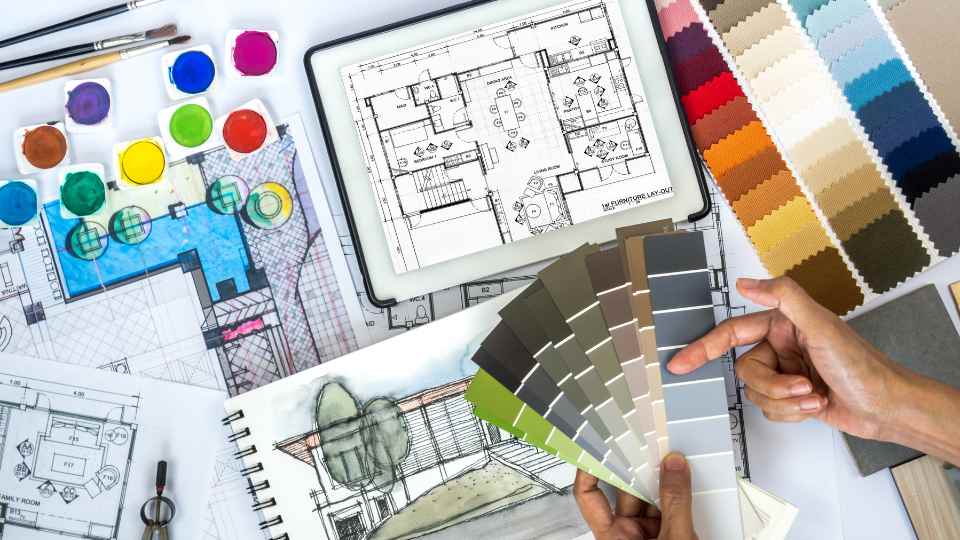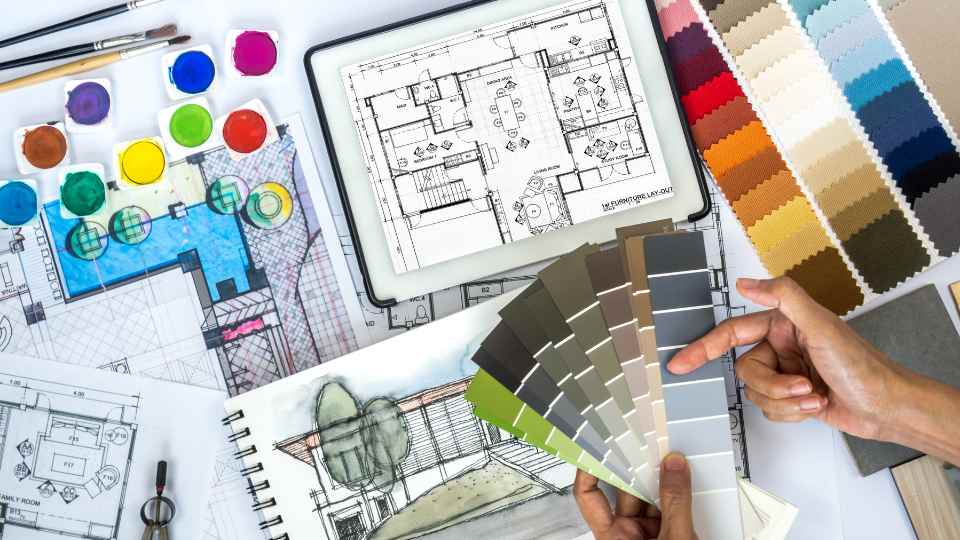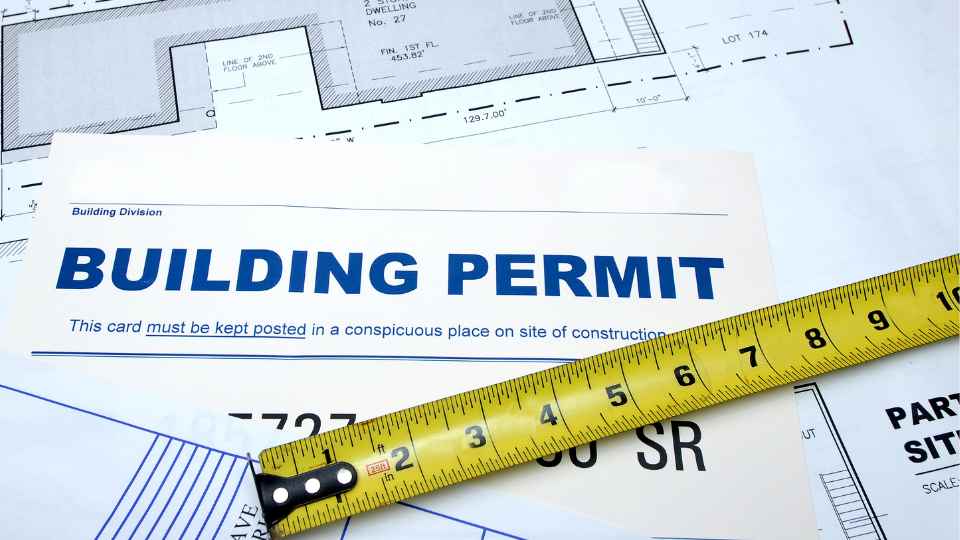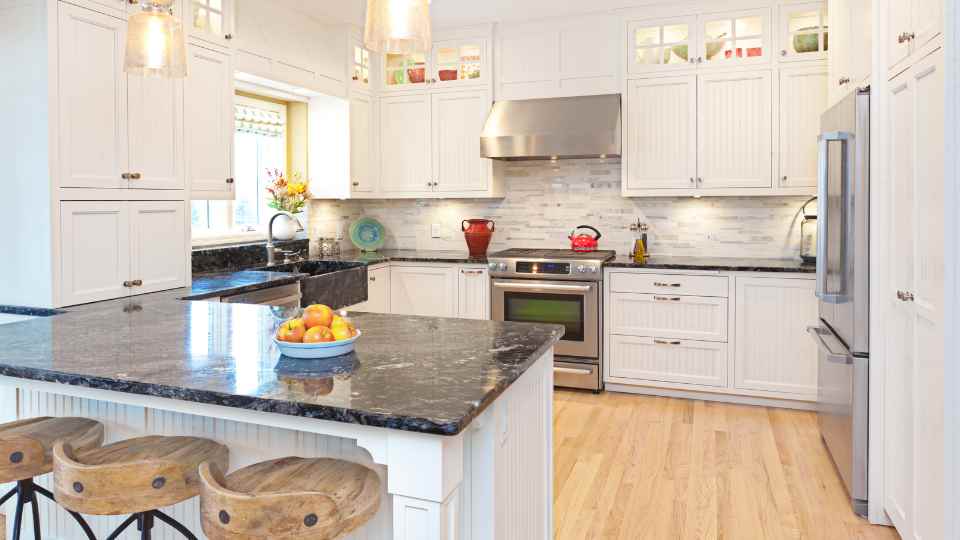Proper planning before a home renovation is not just a recommendation but a crucial necessity. It serves as the foundation for your renovation journey, setting the stage for a smoother, more organized process. Planning can drastically minimize potential challenges and unwanted surprises that might otherwise cause significant setbacks when well executed. We have put together these essential tips to start a remodeling project.
Quick Tips Guide for Planning a Remodel

- Understand Your Motivation: Be clear about what you hope to achieve with your home renovation project.
- Define Your Project’s Scope: Make a detailed outline of the changes you plan to make in your home.
- Set a Realistic Budget: Determine how much you’re willing and able to spend on the project, factoring in a buffer for unexpected costs.
- Establish a Timetable: Develop a timeline for your renovation project, considering potential delays and disruptions.
- Assemble a Reliable Team: Hire professionals with a solid reputation who can help bring your vision to life.
- Plan Thoroughly: Make important decisions about materials, finishes, and the design of your remodeled space early in the process.
- Prepare for Disruption: Acknowledge the likelihood of interruptions to your daily routine and plan for them. This could include setting up temporary living spaces within your home.
- Maintain Open Communication: Regularly check in with your construction crew and other contractors to stay updated about the project’s progress and potential disruptions.
- Stay Flexible and Adapt: Be prepared to change your plans if unexpected challenges arise during the renovation process.
- Manage Your Expectations: Understand that the process may not always go as planned, but remember that every challenge is an opportunity for growth and improvement.
The importance of planning cannot be overstated. It influences the efficiency of your project, affects the quality of the result, and helps control costs.
A well-planned home renovation is an investment that will reap substantial rewards for your home’s functionality and resale value.
In the following sections, we’ll provide an in-depth guide to help homeowners plan effectively for their remodeling projects. These steps, drawn from years of project management experience, are designed to ensure a successful start to your journey.
Whether you’re considering a simple room makeover or a complete home overhaul, these guidelines will arm you with the knowledge to navigate your project’s initial stages confidently.
1. Define Your Vision
Defining your vision is a pivotal initial step in any home renovation. It creates a roadmap of your needs and desires, anchoring your plans and decisions. This involves identifying the purpose of your renovation, be it to improve functionality aesthetics or to increase your home’s value.
A clear vision is a key motivator and a critical reference point to guide you through the renovation process.
I cannot stress enough the importance of taking the time to determine what you want to achieve with the remodel. This involves thoroughly assessing your current space, noting the areas that require improvement, and envisioning how you want the space to look and function post-renovation.

Knowing precisely what you want can significantly facilitate communication with your interior designer and construction team, ensuring your expectations and goals align with their execution plan.
Remember, a well-articulated vision equips you with the direction for your project. It enables you to make informed decisions about materials, design, and the scope of work. This streamlines the remodeling process, reducing the likelihood of costly changes and revisions.
So, as you embark on your renovation journey, remember the importance of starting with a clear, well-defined vision for your project.
2. Set a Realistic Budget:
Setting a realistic budget is a vital part of any remodeling project. This critical step ensures you do not overspend, keeping your renovation within manageable financial parameters. I’ve seen how easy it is to underestimate the actual cost of a remodel.
Unanticipated expenses can quickly accumulate, leading to budget overruns that can stall or even halt the project. Therefore, having a well-thought-out, realistic budget is crucial for maintaining financial control and ensuring the project progresses smoothly.
When setting a budget, consider all potential costs associated with the remodel.
This includes the apparent costs, such as materials and labor, and ancillary expenses, such as permits, inspections, and contingency funds for unexpected complications.
It’s also wise to factor in temporary living arrangements if your remodel will make part of your home uninhabitable. Remember that quotes from contractors often do not include some of these hidden costs, so do your due diligence to avoid unpleasant surprises.
Here are a few tips from my years of project management experience. First, get several quotes from different contractors to get a realistic estimate of the work’s cost. Don’t necessarily go for the cheapest bid, which may compromise quality.

Secondly, always add a contingency of around 10-20% to your budget for unforeseen expenses. Lastly, prioritize your needs over your wants.
It’s okay to splurge on essentials but consider saving on excellent items. This balance can help keep your budget grounded and your expenses in check.
3. Research and Gather Inspiration:
Diving into a pool of inspiration is an invaluable aspect of your remodeling project. Gathering ideas and researching design concepts helps you familiarize yourself with the latest trends, materials, and technologies.
It expands your knowledge base, allowing you to make more informed choices about what suits your aesthetic preferences and lifestyle needs. Not only does this step add an element of excitement and creativity to the process, but it also helps you communicate your desired outcome more effectively to your design team.
There’s a vast array of resources available for gathering inspiration. Traditional outlets like home improvement magazines and design books are a treasure trove of ideas. These can help you understand different architectural styles, color palettes, and space utilization techniques.
In contrast, online platforms like Pinterest, Houzz, or Instagram offer a virtually limitless supply of remodeling ideas. From innovative storage solutions to smart home features, these platforms can expose you to many design elements you might not have considered otherwise.

Lastly, don’t underestimate the value of home improvement shows. Programs like “Fixer Upper” or “Property Brothers” aren’t just entertainment; they’re a window into the remodeling world.
They provide practical insights into the renovation process, showcase design transformations, and even offer tips for budgeting and working with contractors.
Immerse yourself in research as you embark on your remodeling journey, and let your imagination run free. The more inspiration you gather, the more precise your vision becomes and the more likely you are to create a space that genuinely resonates with you.
4. Prioritize Projects:
In the world of home remodeling, not all projects are created equal. Some bring more value and satisfaction than others. I can tell you that prioritizing your projects based on needs, goals, and available resources is a strategic move toward successful renovation. It’s not just about what you want to do but also about what needs to be done first.
Deciding which parts of your home improvement to tackle first can be daunting. A common rule of thumb is to start with projects that are either urgent or will significantly improve your home’s functionality or value.
For example, if your roof is leaking, this should be addressed before any aesthetic modifications. Similarly, renovating a frequently used space such as the kitchen or bathroom may take precedence over less critical areas. Remember, it’s not just about beauty, necessity, and functionality.

Lastly, consider your resources. This includes not only your budget but also your time and energy. If you are undertaking the project yourself, consider the complexity and duration of each project and whether you are equipped to handle it.
If you are hiring professionals, consider their availability and capabilities. It’s essential to understand that remodeling is a process, not a race. The goal is a well-done job that increases your home’s value and your satisfaction with it. Prioritizing effectively can help ensure every project on your list is a step towards that goal.
5. Create a Project Plan:
Creating a comprehensive project plan is instrumental in keeping the remodeling process organized and on track. Just as a map guides you on a journey, your project plan provides a clear direction and timeline for your remodeling project. It outlines the specifics, from the most minor details to the grandest visions, giving a roadmap that leads your project from conceptualization to completion.
At its core, a project plan contains timelines, milestones, and tasks. The timeline sets the project’s duration, keeping everyone involved aware of the start and end dates and ensuring timely completion.

It should be realistic, considering potential delays and unexpected issues that may arise. On the other hand, the milestones are significant events or stages in the project. They give a sense of progress and help you track whether the project progresses as planned.
Tasks represent the meat of the project plan. The activities must be carried out to achieve the milestones and the project’s goal. Tasks should be clearly defined, assigned to the right team members, and have specific deadlines.
Remember, a well-formulated project plan is the backbone of any successful remodeling project. It reduces uncertainty, improves efficiency, and provides a sense of control, ensuring that your dream home does not remain just a dream.
6. Hire the Right Professionals:
Hiring the right professionals is one of the most critical steps in a home remodeling project. The quality of workmanship, the efficiency of execution, and, ultimately, the success of your project largely depend on the expertise and experience of these individuals.
Working with seasoned general contractors, interior designers, and architects can make the difference between a smoothly run project and one riddled with mistakes and delays.
When looking for professionals, consider their experience, reputation, and specialties. Check their portfolio of past projects and look for reviews or testimonials from previous clients. It’s also wise to meet with them to assess their understanding of your project and see if their style and work ethic align with your expectations.

Moreover, make sure that they are licensed and insured. This validates their professional standing and protects them from potential liabilities during the project.
Remember, the right professionals will not just execute your vision but often improve upon it, offering insights and recommendations that you may not have considered. Their expertise can be the key to unlocking the true potential of your home.
7. Obtain Necessary Permits:
Permits are integral to quality checks, affirming that your project maintains any home remodeling project’s safety, health, and welfare, acting as legal validations that ensure your renovation adheres to local building codes and regulations.
Essentially, they serve as a quality check, affirming that your project maintains the property’s and its occupants’ safety, health, and welfare. In many jurisdictions, conducting a renovation without the necessary permits can lead to hefty fines or legal complications, potentially devaluing your property or making it harder to sell in the future.
Determining which building permits you need can be a complex process, as the requirements vary by location and the specifics of your project. For instance, you may require different permits for structural alterations, electrical work, or plumbing modifications.

The most reliable way to identify what documents you need is to consult your local building department or a professional who understands your area’s building codes. They can provide accurate, up-to-date information specific to your project needs.
Obtaining the necessary permits may seem daunting, but it is a manageable process with the right approach. Typically, this involves submitting an application to your local building department and detailed plans of your proposed work.
These documents are then reviewed to ensure they meet local building codes.
Remember that this process can take time, so it’s best to apply for permits well before your intended start date. While obtaining permits may seem like an extra step, it is a crucial part of a successful remodeling project, ensuring your renovations are safe, legal, and up to standard.
8. Develop a Material and Finish Selection Strategy:
The selection of materials and finishes is a significant aspect of any remodeling project. It’s not just about aesthetics; your chosen materials significantly influence the durability, maintenance requirements, and even the renovation cost.
Thus, it’s crucial to choose materials and finishes that align with your project’s goals; whether you aim to create a space that is low maintenance, environmentally friendly, or simply luxurious, your selection should reflect these objectives.
When making decisions about materials, consider their longevity and how they will withstand wear and tear. For instance, if you’re remodeling a high-traffic area like a kitchen or bathroom, you’ll want to choose durable and easy-to-clean materials.
Furthermore, consider the style of your home and the visual impact you want to achieve. The materials’ color, texture, and finish can dramatically alter a space’s look and feel. It’s also worth considering how your chosen materials will impact the project’s cost, as high-quality materials can significantly increase your budget.

Finally, don’t overlook the importance of planning and early selection. Waiting until the last minute to make these decisions can result in delays and potential compromises in quality if your first choices aren’t available.
Spend time reviewing samples, visiting showrooms, or using digital tools to visualize different options within your space. Remember, the materials and finishes you select will significantly define your remodeled space’s final look and feel, so these decisions deserve careful consideration.
9. Prepare for Disruption:
No matter the size, a home renovation will likely disrupt your everyday life. It is essential to acknowledge this fact and plan for it accordingly. The presence of construction crews, the noise of power tools, and the inevitable dust can all pose challenges.
Additionally, you may have spaces in your home that will be temporarily unusable during remodeling. Preparing yourself mentally for these disruptions can help alleviate stress and keep you focused on the exciting changes.
One effective strategy to minimize disruption is to plan and create a temporary living area that can accommodate your daily needs during the renovation period. Consider the functionality of each room and its relevance to your daily routines.

For instance, setting up a temporary kitchen space with essential appliances in another part of the house can be a lifesaver to survive a kitchen remodel. If you’re renovating bedrooms, arranging alternative sleeping quarters ahead of time reduces last-minute stress.
Additionally, maintaining open communication with your construction crew can help you anticipate the most disruptive tasks and plan your schedule accordingly.
Tell them about your work-from-home hours, children’s nap times, or any other home activities requiring peace. They can often schedule louder tasks around your routines.
Moreover, regular updates on the project’s progress will also allow you to adjust your plans as necessary. Remember, preparation and flexibility are the keys to managing the disruptions that come with remodeling.
10. Stay Flexible and Adapt:
Embarking on a home remodeling journey entails learning to navigate the unpredictable nature of such projects. Even the most meticulously planned renovations can often encounter unforeseen circumstances that require adaptability and flexibility.
As an experienced project manager assistant, I can assure you that alterations to the original plan, unexpected challenges, or delays are all part and parcel of the remodeling process. It’s important to remember that alterations to your plan are not necessarily a setback; instead, they provide an opportunity to reassess and optimize your project goals and outcomes.
When unexpected challenges arise, maintaining a composed demeanor is crucial. Embrace these instances as opportunities to learn and innovate.
Every obstacle has a silver lining; for instance, if a chosen material is out of stock, it might lead you to discover an alternative that you love even more and that aligns better with your project’s overall aesthetic.
Engage in constant dialogue with your contractors, architects, and designers to find creative solutions and continue making progress.
Lastly, managing your expectations and staying open to changes is critical to maintaining a positive and productive renovation experience.
Your ability to adapt to unforeseen circumstances is instrumental in determining the project’s ultimate success. This adaptability does not mean compromising the quality or design of your renovation but rather making informed decisions that best align with your project’s constraints and opportunities.
Remember, the goal is to create a space you love that is functional, comfortable, and reflective of your style.
Final Thoughts on Starting a Remodeling Project
In conclusion, successful home remodeling entails carefully orchestrating several crucial steps. As an experienced project manager assistant, I’ve seen firsthand how the process starts with understanding your motivation and defining your project’s scope.
It’s followed by setting a realistic budget and timeline that aligns with your expectations. The next vital step involves assembling a reliable team of professionals who will be instrumental in bringing your vision to life.
Moreover, thorough planning and early decision-making cannot be overstated. This includes selecting suitable materials and finishes that enhance your home’s aesthetic appeal and fit your lifestyle and budget.

Preparing for inevitable disruptions and creating temporary living areas can help maintain a semblance of normalcy during the renovation process. Consistent communication with your construction crew and other professionals will help anticipate and thus minimize the impact of these disruptions.
The remodeling process, while complex, offers an exciting opportunity to create a space that reflects your style and enhances your comfort and lifestyle.
By staying flexible and ready to adapt, you’ll navigate the unpredictable nature of renovation projects. Unforeseen challenges are not setbacks but opportunities to reassess, optimize, and perhaps even enhance your project’s outcomes.
As you embark on your remodeling journey, I hope these ten essential steps serve as a valuable guide, leading you to a successful and fulfilling home remodeling experience.





